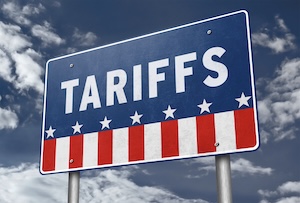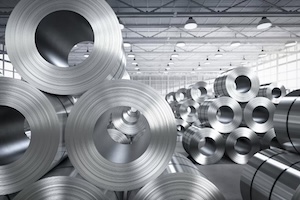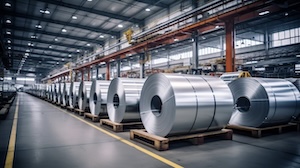Potential IEEPA Refunds Navigation With Braumiller Law Group’s Adrienne Braumiller

Bob Brewer sits down with Braumiller Law Group’s Adrienne Braumiller to discuss potential IEEPA refunds navigation.
Potential IEEPA Refunds Guidance

The legality of the Fentanyl IEEPA tariffs and the Reciprocal IEEPA tariffs is currently pending in the Supreme Court. A decision is expected in January, although it could come sooner, though the Court may not directly address refund mechanics. Instead, it could remand the issue to the Court of International Trade (CIT), which would delay guidance for several months.
BRICS and the Drive Towards De-Dollarization: Has It Stalled?

Could BRICS break the dollar’s grip? The answer is coming into sharper focus, and it’s more complicated than either the optimists or skeptics predicted. Since our previous analysis, BRICS has made concrete moves toward de-dollarization while simultaneously confronting harsh economic and political realities. The gap between ambition and achievement has never been clearer.
Taxing Imports: Tracing the Role of Tariffs in U.S. Economic Policy

In the Chinese zodiac calendar, 2025 is the year of the snake. The snake is said to represent wisdom and strategy. As it occasionally sheds its skin, it is also said to represent a change or an inflection point. Whether American trade policy in the year of the snake exemplifies wisdom and strategy depends on one’s political perspective. Whether it exemplifies a major transformation and inflection point is unquestionable.
President Trump Cuts Certain Reciprocal Tariffs on Agricultural Products

On November 14, 2025, President Trump issued an Executive Order exempting certain agricultural products from the reciprocal tariffs. The exemptions for certain agricultural products went into effect on November 13, 2025.
New Value Manifest/Manifestacion de Valor – via VUCEM

Beginning December 9, 2025, importers in Mexico will be required to complete and submit the Electronic Value Manifest through VUCEM (Mexico’s Electronic Single Window). This measure increases the importer’s direct participation and responsibility in determining and declaring the correct customs value of imported goods.
Tariffs, Deals, Steel, Aluminum and AI – Oh My! Welcome to the New Normal

New tariffs, changed tariffs, and reduced tariffs are announced with short notice. The duties on merchandise can change while a shipment is in the middle of the ocean. The status of free trade agreements has become uncertain. New detailed duties are assessed on steel and aluminum and their derivatives. Artificial intelligence is playing an increasing role.
Critical Minerals Focus of White House Trade Agreements in 2025

The Trump Administration is pursuing a new style of trade management based on use of tariffs to rectify trade deficits and to set new “reciprocal” tariff rates to level the playing field for all of its trading partners. Critical minerals are a key component of the strategy, because the U.S. is heavily dependent of foreign sources for most of the critical minerals used in modern manufacturing. In response to Trump-imposed tariffs and threats of other trade actions, China has repeatedly used export controls on rare earths and other critical minerals as leverage. This article looks at the current state of critical minerals trade actions, starting with new US agreements with multiple trading partners, then reviewing international norms and proceeding through other trade actions involving critical minerals.
Section 232 Steel & Aluminum Derivative Products Inclusion Process Expands Scope of the National Security Purpose of Section 232 Investigations

On February 10, 2025, the President issued Presidential Proclamations Under Section 232 of the U.S. Code adjusting imports of steel and aluminum into the United States. These Proclamations provided an expanded listing of steel and aluminum derivative articles but also instructed the Secretary of Commerce (Secretary) to establish a process for including additional derivative aluminum and steel articles within the scope of the ad valorem duties.
The Automotive Industry, China’s Semi Grip on Supply Chains, and General Motors 2027 Exit Strategy for Suppliers (Is a clean break even possible?)

General Motors (GM) has instructed thousands of its suppliers to phase out sourcing parts and materials from China by 2027. The exit strategy began in early 2024, with the directive gaining momentum in spring of this year, 2025. This directive is part of GM’s broader strategy to enhance supply chain resiliency and reduce exposure to geopolitical risks, particularly amid escalating, or let’s just say, continuously fluctuating, U.S.–China trade tensions.
